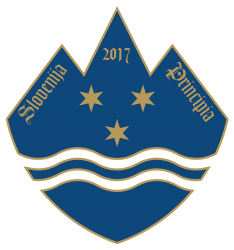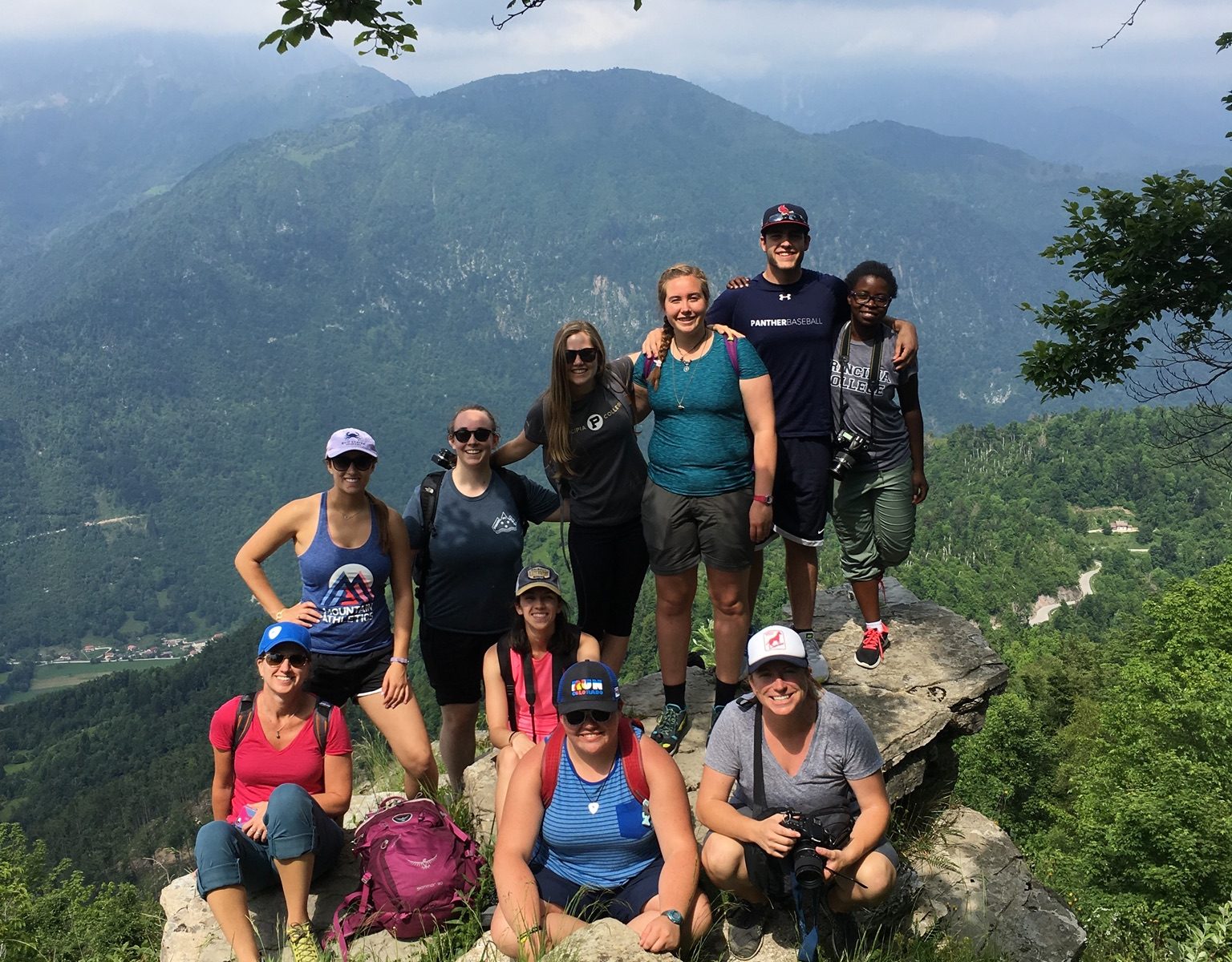Today found our group atop Slovenia’s mountains in the Julian Alps, admiring nature as well as historical remains. 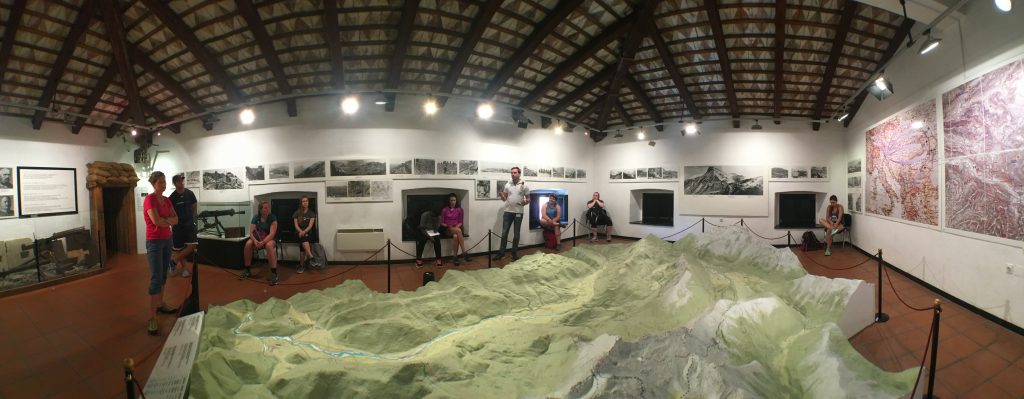
After an orientation at the World War I museum in Kobarid (Caporetto), we took a 20-minute bus ride on an alarmingly narrow road to the position of the Italians’ third line in that war. We then trekked behind Jaka, our local guide. I examined the trail beneath my tennis shoes, imagining the weary steps of Italian soldiers during WWI. This area, the Soča Front (better known in U.S. history books as the Isonzo Front), was fiercely fought over after Italy declared war on Austria-Hungary.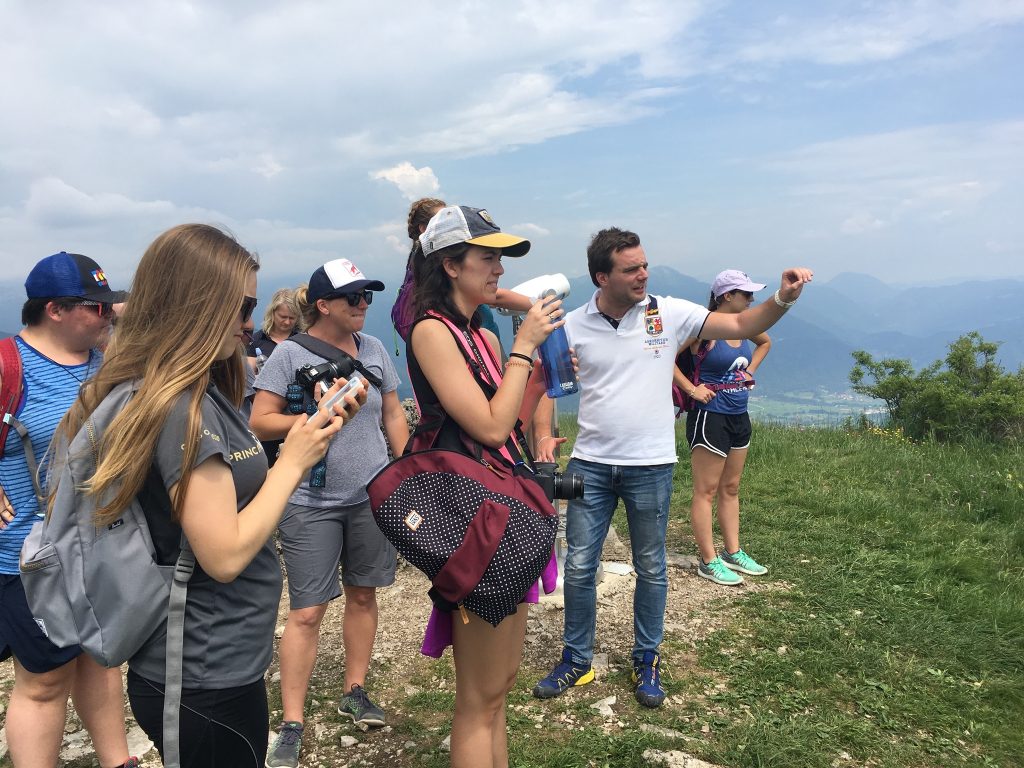
The eerie fortifications and trenches were reconstructed in 2000. We learned about the functions of different rooms, such as ammunition storage, officers quarters, or a shelter tucked away 30 meters of solid rock below the artillery fire. In the eerie blackness, I once again attempted to picture the agonizing life of a soldier, to no avail. Maybe it is better for the death and destruction long ago to remain incomprehensible.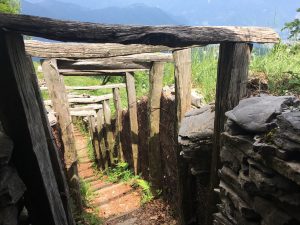
The path we walked actually represents the end of the senselessness I tried so hard to grasp. It’s part of the Walk of Peace, a trail that follows the River Soča and remnants of one of the bloodiest fronts during World War I. It serves to commemorate the soldiers on all sides that lost their lives, in addition to advocating the end of all wars and appreciation of unspoiled nature. Admiring the blue mountaintops, rolling hills, and quaint villages below, it was not hard to buy into its message.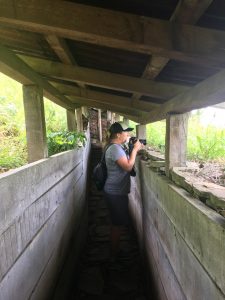
With the help of our guide, we could identify the battle lines that were drawn about 100 years ago. Despite 11 intense battles launched by the Italians, these lines did not budge a millimeter. It wasn’t until Austro-Hungary launched a major offensive with their allies, the Germans, that they overtook the entire region . . . only to be driven out by the Italians later when the Austro-Hungarian empire fell.
What I really gained from this expedition is that the Slovenians (living mostly in the Austrian-Hungarian borders) were really caught in the middle of the monstrosity of World War I. And the effects of the war on the people of its valleys were almost worse than the war itself. 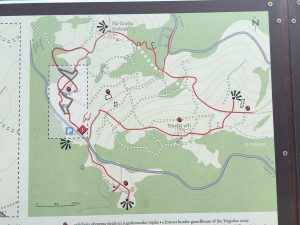 Yet, who knows if Slovenia would be its own nation today if history hadn’t played out the way it did? I cannot say, but I do know that I felt honored to walk along the Walk of Peace, leaving with the mountains and a little more peace in my own heart.
Yet, who knows if Slovenia would be its own nation today if history hadn’t played out the way it did? I cannot say, but I do know that I felt honored to walk along the Walk of Peace, leaving with the mountains and a little more peace in my own heart.
Mesa Goebel is a global studies major with a focus in peace and conflict. She studied the Kurent Festival, a lively celebration of fertility and the coming of spring with mythological roots. She loves nature, outdoor recreation, and traveling!

